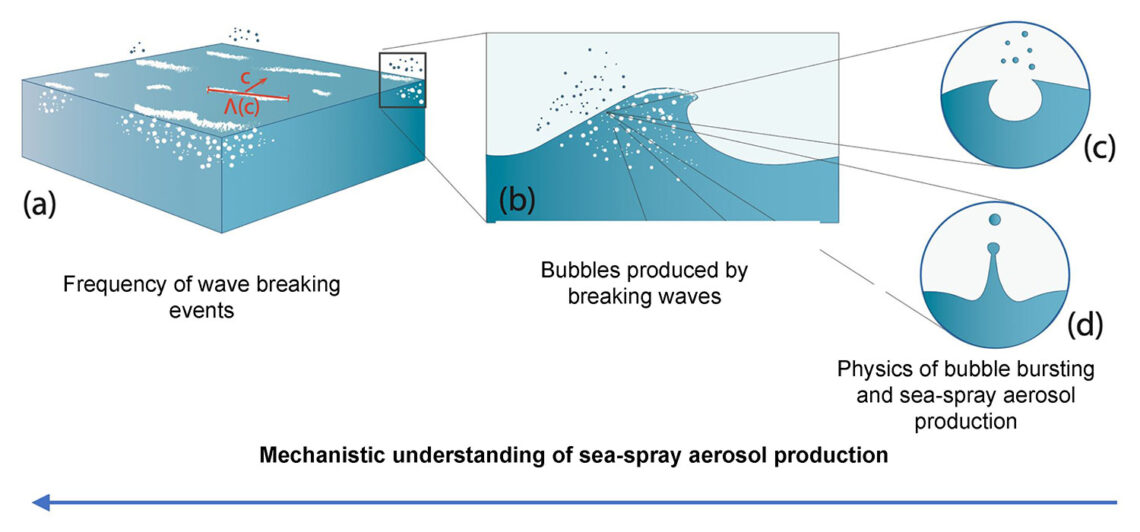May 24th, 2023
Key Findings
- A proposed mechanistic sea spray generation function for climate models takes into account the sea-state, wind, and temperature variability.
- This function was tested using a global wave model, and results compare well to existing formulations in terms of wind speed dependency, size distribution, and total amount of emitted sea salt.
- Remarkable coherence is shown between the model and observations of sea salt emissions, strongly supporting the mechanistic approach and the resulting sea spray generation function.
Luc Deike, Brandon Reichl, Fabien Paulot. AGU Advances. DOI: 10.1029/2022AV000750
Bubbles bursting at the ocean surface are an important source of sea spray aerosols. They contribute to atmospheric aerosols and play a crucial role in radiative and cloud processes. Uncertainties related to the large range of scales involved, and the complexity of the processes, leads to open questions about the dependencies on wind speed, ocean wave properties and water temperature.
The authors propose a new mechanistic sea spray generation function for climate models that takes into account the sea-state, wind, and temperature variability to address this challenge. This approach naturally integrates the role of wind and waves via the breaking distribution and entrained air flux, and a sensitivity to temperature via individual bubble bursting mechanisms. The resulting sea spray generation function does not require tuning to match any existing data sets, in terms of magnitude of sea salt emissions and recently observed temperature dependencies. The approach is physically based, using the physics of bubble bursting. The remarkable coherence between the model and observations of sea salt emissions strongly supports the mechanistic approach and the resulting sea spray generation function.
Knowledge of the size distribution of primary sea spray aerosol particles and its dependence on meteorological and environmental variables is necessary for modeling cloud microphysical properties and the influence of aerosol on radiative processes. Currently, the extent and brightness of marine low clouds are poorly represented in Earth system models, and the response of low clouds to changes in atmospheric greenhouse gases and aerosols remains a major source of uncertainty in climate projections.
By using the physical principles of bubble bursting, the proposed mechanistic formulation for sea spray aerosol emissions using wave models represents a significant advancement over previous models. It also has the potential to improve our ability to predict the impact of sea spray aerosols on the climate and our understanding of their effects on the atmosphere and climate. This approach is in synergy with current efforts by several modeling centers to develop coupled oceanic and atmospheric wave models, moving toward coupled wave-atmosphere-ocean Earth system models. Consequently, this could contribute to the development of more accurate climate models.



